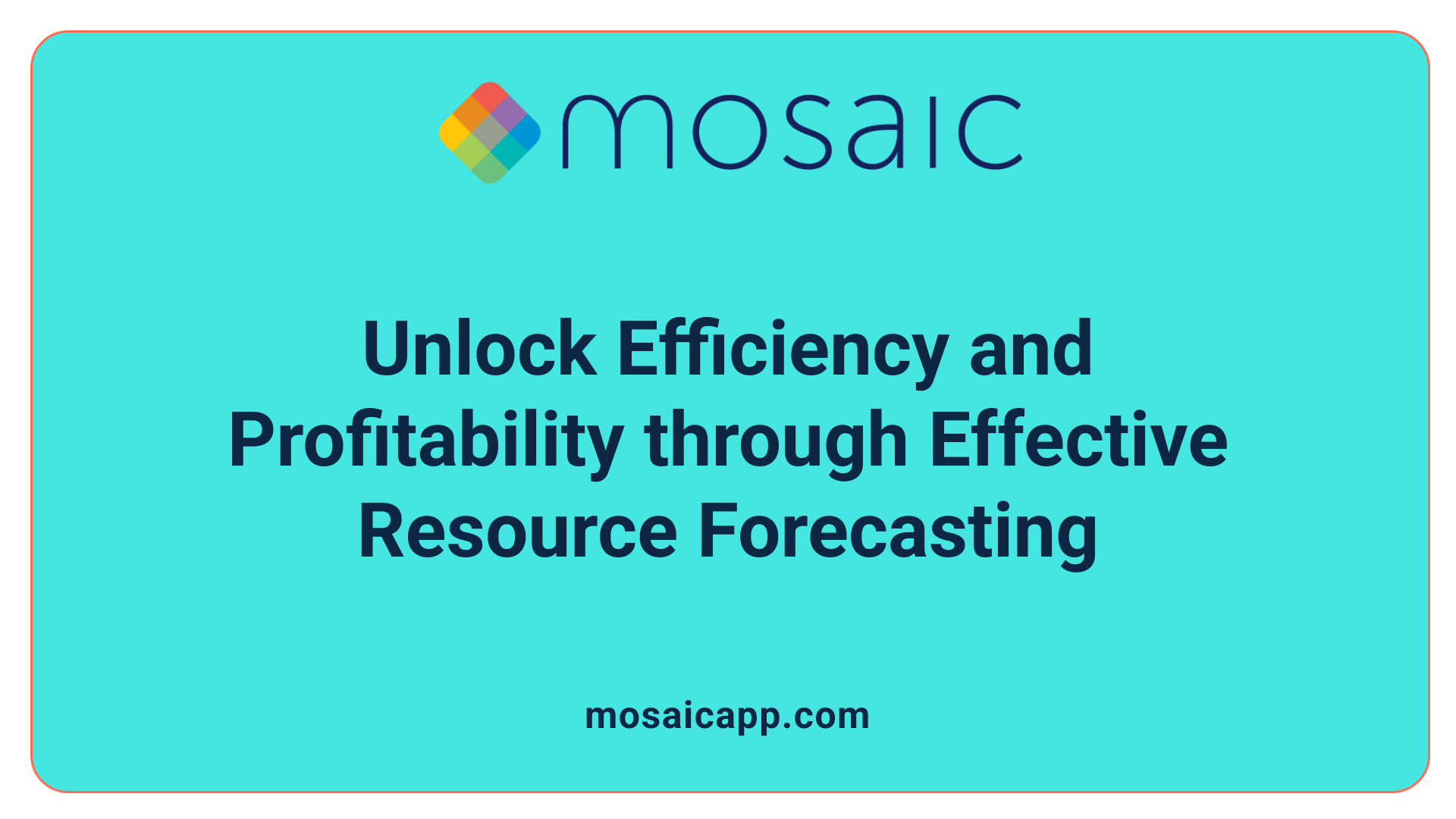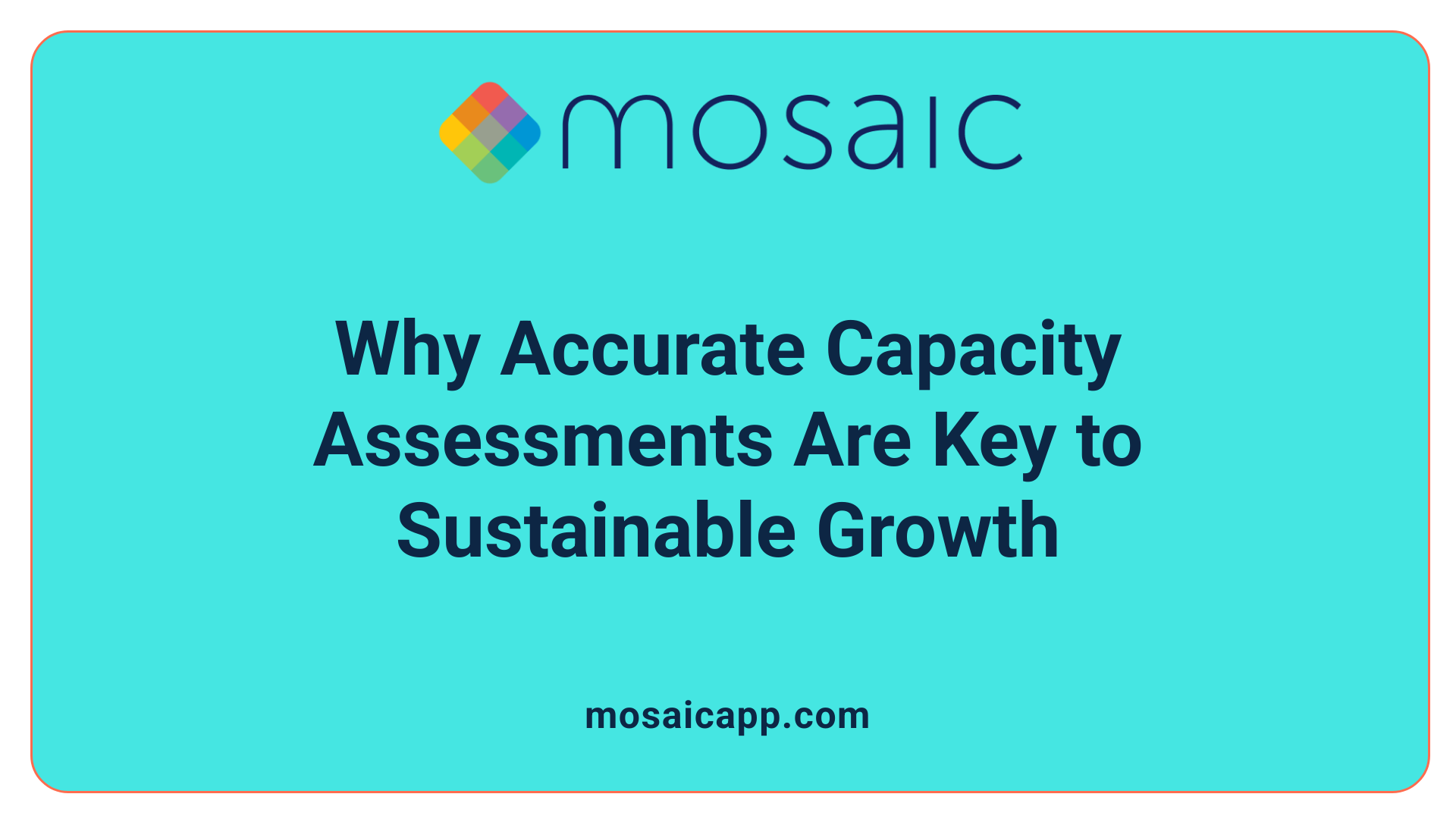The Critical Link Between Forecasting and Hiring
In the dynamic landscape of professional services, firms grapple with balancing client demands, project timelines, and resource availability. An emerging strategic approach is predictive hiring, enabled by advanced resource forecasting and management. This article explores how professional service organizations can harness predictive forecasting methodologies and technology to optimize hiring decisions, improve project delivery, and foster sustainable growth, thus aligning workforce planning tightly with business objectives.
Understanding Resource Forecasting and Its Role in Hiring
What is Resource Forecasting?
Resource forecasting is a strategic process used primarily by professional services firms to predict their future resource needs. This involves estimating the number and type of resources—most notably human resources—required to effectively execute projects over a given timeline.
By leveraging data analysis, historical trends, and specialized forecasting tools, firms can anticipate project durations, resource availability, and potential bottlenecks before they arise. This foresight supports smooth project scheduling and minimizes unexpected shortages or overallocations.
Why is Resource Forecasting Important for Professional Services Firms?
Resource forecasting plays a critical role in optimizing how firms manage their workforce and other assets. Proper forecasting ensures that projects have the right skills available at the right time, improving client satisfaction by meeting deadlines and avoiding delays.
Furthermore, accurate forecasting helps identify revenue leakages by revealing inefficiencies such as underutilized staff or missed opportunities for capacity expansion. It also aligns stakeholders and teams across operations, finance, and leadership, preventing silos and boosting organizational efficiency.
In firms where 47% prioritize assessing team capacity, resource forecasting serves as an essential tool for understanding workload distribution and operational readiness.
How Does Resource Forecasting Influence Hiring Plans?
Effective resource forecasting directly impacts hiring decisions. By forecasting future workload and project demand, firms gain clarity on when to hire, how many staff to onboard, and which skill sets to prioritize.
This proactive approach supports sustainable growth by avoiding overhiring, which 76% of firms caution against, and helps manage risks associated with sudden increases in demand. It empowers firms to strategically scale their workforce, ensuring they have the capacity to confidently acquire and retain clients without compromising profitability or employee morale.
In summary, resource forecasting bridges the gap between current resource availability and future client needs, enabling professional services firms to make informed, data-driven hiring and operational decisions.
Key Benefits of Effective Resource Forecasting

How does resource forecasting help prevent resource shortages?
Resource forecasting enables firms to anticipate future resource demands accurately by analyzing project scopes and client needs. This proactive approach helps avoid situations where teams become overburdened or where critical skills are unavailable, thus preventing resource shortages that can delay projects.
In what ways does resource forecasting improve project scheduling?
By estimating project durations and aligning resource availability with project timelines, resource forecasting leads to more realistic and efficient schedules. This helps organizations avoid bottlenecks and last-minute adjustments, ensuring that projects run smoothly and meet deadlines.
How is resource utilization optimized through forecasting?
Resource forecasting identifies under- and over-utilized staff by analyzing workload data and capacity. This balance helps allocate the right people to the right tasks at the right time, minimizing bench time and overtime, which increases overall productivity and profitability.
What are the benefits of resource forecasting for stakeholder alignment and client satisfaction?
Accurate forecasts provide transparency to all involved parties, including operations, finance, and leadership teams. This alignment ensures that expectations are managed appropriately, projects are delivered as promised, and clients experience confidence in the firm’s ability to meet their needs, enhancing satisfaction and retention.
How does resource forecasting aid in identifying revenue leakages?
By improving visibility into team capacity and project progress, forecasting uncovers inefficiencies such as idle time, missed billable hours, or scope creep. Early identification of these revenue leaks allows firms to take corrective action to protect and improve their profit margins.
These benefits collectively enable professional services firms to operate more efficiently, maintain competitive advantage, and support sustainable growth.
The Step-by-Step Process of Resource Forecasting

Understanding project scope and client needs
Resource forecasting begins with a clear grasp of the project scope and understanding client requirements. Defining what the project entails and delivering this clarity ensures the right resources are aligned from the start, supporting better project outcomes.
Defining deliverables and estimating demand
Next, precise deliverables are outlined, enabling teams to estimate the demand for various resources, including personnel with specific skills. This estimation considers the volume and nature of tasks, helping forecast the workload accurately.
Analyzing tasks and assessing resource availability
Breaking down the project into individual tasks allows for detailed analysis. Teams then assess the availability of resources, reviewing staff capacity, skillsets, and existing commitments to determine feasibility and resource allocation.
Identifying gaps and bottlenecks
Once demand and availability are known, gaps or bottlenecks become apparent. These are resource shortages, skill mismatches, or scheduling conflicts that could hinder project delivery. Spotting these early prevents disruptions during execution.
Making contingency plans
Preparing for unforeseen challenges, contingency plans are developed. These may include backup staffing options, flexible scheduling, or resource reallocation strategies to maintain progress despite uncertainties.
Balancing demand with supply
Finally, demand and supply are balanced through careful adjustment of resource assignments, prioritizing tasks, and possibly adjusting timelines. This ensures optimized resource utilization without overburdening teams or risking project delays.
This structured process supports professional services firms in improving project scheduling, preventing resource shortages, and ultimately enhancing client satisfaction and operational efficiency.
Common Challenges and Mistakes in Resource Forecasting
What are the common challenges in resource forecasting?
Resource forecasting faces several challenges that can severely impact its accuracy and effectiveness. One prevalent issue is human error from using spreadsheets, which are prone to manual input mistakes and data inconsistencies. This can lead to unreliable forecasts and poor decision-making.
Another significant challenge is the lack of enterprise-wide visibility into resource availability and workload. Without a centralized view, organizations struggle to properly allocate resources across projects, leading to bottlenecks and inefficiencies.
What mistakes occur due to inaccurate demand forecasting?
Inaccurate demand forecasting often results from insufficient or outdated data, improper project scoping, or overlooking external market factors. This mistakes cause either resource shortages or overstaffing, both of which inflate costs and decrease productivity.
How do financial inconsistencies affect forecasting?
Financial inconsistencies arise when resource costs, project budgets, and expected revenues are not properly aligned with the resource forecast. This misalignment leads to shrinking profit margins and makes it difficult to meet financial targets.
Why is forecasting pipeline demands difficult?
Forecasting pipeline demands is challenging because it involves predicting future project volume and complexity amidst market uncertainties. Many firms lack the tools or processes to analyze upcoming opportunities accurately, leading to unexpected resource gaps or idle capacity.
Addressing these challenges requires investing in integrated resource management software, establishing standardized data collection, and continuously updating forecasts with real-time data. This approach enhances visibility, reduces errors, and improves the reliability of resource planning in professional services firms.
Strategic Importance of Accurate Capacity Assessment

Why is assessing team capacity important?
Assessing team capacity is critical for professional services firms, with 47% of firms prioritizing it as their primary goal. Understanding the availability and workload of resources enables firms to allocate staff effectively, avoid overburdening teams, and ensure projects have the right skill sets. This assessment supports proactive planning, preventing resource shortages and organizational bottlenecks.
How does capacity assessment impact forecasting accuracy and hiring?
Accurate capacity assessment directly improves resource forecasting by providing a realistic view of current and future team availability. It helps firms predict demand more precisely, enabling strategic resource allocation and avoiding last-minute hiring or bench time. Furthermore, having precise capacity insights allows firms to make intentional hiring decisions aligned with forecasted workload, promoting sustainable growth. Notably, 76% of firms express caution about hiring significantly without clear forecasted needs.
What is the correlation between capacity assessment and achieving profit margin targets?
The visibility gained through thorough capacity assessment is closely linked to financial performance; only 20% of firms that set profit margin targets consistently achieve them. This low success rate is often due to poor insight into team capacity and workload, which hinders effective resource utilization and project cost management. Firms that successfully assess and align capacity are better positioned to maximize profitability by reducing underutilization, avoiding project delays, and managing budgets accurately.
Bridging Gaps: From Forecasting to Predictive Hiring
How Does Resource Forecasting Anticipate Workforce Needs?
Resource forecasting helps professional services firms understand future demand by analyzing project scopes, client requirements, and historical data. By predicting the number and types of resources needed, firms can plan ahead to avoid common pitfalls like overburdened teams or resource shortages. This proactive approach allows organizations to visualize workload trends and capacity constraints well before projects begin.
How Can Hiring Align With Future Project Workload?
Intentional hiring based on accurate resource forecasts ensures that staffing levels meet anticipated demand without causing unnecessary overhead. Because 76% of firms express caution over significant hiring, predictive forecasting enables companies to scale intelligently. It supports informed decisions about when to bring new talent onboard, balancing supply with upcoming project needs and avoiding last-minute recruitment surprises.
What Risks Are Mitigated Through Effective Forecasting?
Without proper forecasting, firms often face missed deadlines, shrinking margins, and overwork among staff. By aligning resources strategically, firms can prevent these issues and maintain operational efficiency. Improved visibility reduces bottlenecks and workload imbalances, leading to higher employee morale and better client satisfaction. This decreases vulnerability to project delays and financial shortfalls.
How Does Predictive Hiring Support Sustainable Growth?
Predictive hiring fueled by insightful resource forecasting empowers firms to grow sustainably. Forecasting provides clarity on future workload volatility, enabling leaders to plan recruitment and training initiatives that align with growth objectives. This intentional approach fosters stability, optimizes resource utilization, and supports maintaining profitability targets and service quality over the long term.
Role of Technology in Enhancing Resource Forecasting and Hiring
Use of Advanced Tools Like Rocketlane and Provus
Professional services firms increasingly depend on advanced tools such as Rocketlane and Provus to enhance resource forecasting and streamline hiring processes. Rocketlane's platform provides predictive analytics and real-time data updates, enabling firms to anticipate resource requirements accurately and make informed decisions. Provus's cloud-based solution integrates real-time workload and capacity data, offering a unified view crucial for data-driven planning and quota management.
Features Such as Predictive Analytics, Real-Time Data, Skill Matching
These platforms incorporate critical features that improve forecasting accuracy and hiring efficiency. Predictive analytics analyze historical and current project data to forecast future demands. Real-time data ensures that resource status is constantly updated, preventing bottlenecks and overbooking. Skill matching aligns workforce capabilities with project requirements, promoting optimal resource allocation and reducing the risk of misfits.
Collaboration and Integration Capabilities
Both Rocketlane and Provus facilitate collaboration across teams by integrating resource management with other business systems, including project management, CRM, and accounting software. This integration fosters transparency and alignment among operations, finance, and leadership teams, breaking down silos and improving communication. Collaborative tools help teams work together seamlessly, ensuring swift adjustments to resource allocation amid changing project scopes.
Benefits of Cloud-Based Platforms
Cloud-based resource forecasting platforms deliver scalability and flexibility essential for professional services firms. They support continuous updates and real-time visibility across dispersed teams, which is vital for managing complex project portfolios. Furthermore, cloud solutions reduce upfront infrastructure costs, provide secure data storage with encryption and access controls, and enable rapid deployment of new features, allowing firms to adapt quickly to evolving market demands.
Features and Benefits of Resource Management Software
Resource Scheduling, Time Tracking, Skill Tracking
Resource management software offers comprehensive tools for resource scheduling that enable organizations to assign and adjust resources efficiently across projects. Time tracking capabilities capture actual work done, providing insights into utilization and productivity. Skill tracking helps managers match the right talent to specific project needs, optimizing outcomes and reducing mismatches.
Capacity Planning and Budget Management
These platforms facilitate capacity planning by analyzing resource availability and workload, allowing organizations to anticipate and address bottlenecks ahead of time. Budget management features help monitor financials tied to resources and projects, aiding in cost control and profitability.
Reporting and Analytics
Advanced reporting and analytics provide real-time visibility into resource utilization, project progress, and financial metrics. These insights support informed decision-making and help identify areas for improvement.
Collaboration and Real-Time Visibility
Collaboration tools embedded in resource management software enhance communication among team members and across departments. Real-time visibility ensures everyone stays updated on resource status, assignments, and changes, promoting agility and responsiveness.
Integration with CRM, Accounting, Project Management Systems
Integration capabilities allow seamless connection with other enterprise tools like CRM, accounting, and project management software. This unified ecosystem eliminates data silos and ensures consistency across business functions.
Security Features
Security is a critical aspect, with features such as data encryption, secure access controls, and regular audits to safeguard sensitive organizational and client information.
By embracing these features, resource management software helps firms improve resource allocation, enhance operational efficiency, boost collaboration, and make data-driven decisions that contribute to sustained business success.
Adopting Best Practices for Resource Forecasting and Predictive Hiring
Early Resource Allocation
Starting resource allocation early allows professional services firms to anticipate demand and assign personnel proactively. This approach prevents last-minute shortages and helps maintain a balanced workload across teams, leading to smoother project execution and improved client satisfaction.
Regular Forecast Updates
Resource forecasting is not a one-time task. Regularly updating forecasts ensures they remain accurate and responsive to changing project scopes, client needs, and market conditions. Continuous monitoring and adjustment prevent bottlenecks and align resource availability with project demands.
Fostering a Data-Driven Culture
Encouraging teams to rely on data enhances the accuracy of resource forecasts and decision-making. By adopting tools that provide real-time analytics and historical insights, firms can reduce human error common in manual processes, improve visibility into workload and capacity, and support strategic hiring decisions.
Cross-Functional Alignment
Aligning operations, finance, and leadership teams around shared forecasting processes breaks down silos and promotes transparent communication. This coordination ensures that resource plans support financial targets and operational capabilities, preventing misallocation and enhancing organizational efficiency.
Pipeline Visibility and Single Source of Truth
Maintaining clear pipeline visibility through integrated platforms provides a comprehensive view of upcoming projects and resource demands. Establishing a single source of truth for resource data consolidates information, facilitating more accurate capacity planning and preventing conflicting or outdated data use.
By embedding these best practices, professional services firms enhance their ability to forecast resource needs accurately and make predictive hiring decisions that sustain growth and profitability.
Operational Impacts of Neglecting Resource Forecasting
What Happens When Firms Lack a Reliable Forecasting Process?
Neglecting reliable resource forecasting poses significant operational challenges for professional services firms. Only 20% of firms have dependable forecasting, yet 41% prioritize new business, creating a mismatch between demand and capacity. Without forecasting, organizations face difficulties aligning resources with incoming projects, leading to inefficiencies and increased risk.
How Do Overburdened Teams and Shrinking Margins Affect Performance?
When forecasting is poor, teams become overburdened trying to meet unexpected workload spikes. This leads to burnout, decreased morale, and higher turnover rates. Additionally, unplanned overtime and last-minute hires increase costs, thereby shrinking profit margins. Scarce visibility into team capacity makes sustaining profitable operations challenging.
What Are the Risks of Missed Deadlines and Project Challenges?
Failing to anticipate resource bottlenecks often results in missed deadlines and compromised project quality. Without foresight, companies struggle to allocate the right skills at the right time, increasing risk exposure. Project delays can damage client relationships and reduce overall satisfaction, harming long-term business sustainability.
Why Does Poor Forecasting Cause Firms to Fall Behind Competitors?
Firms that do not effectively forecast resource needs risk falling behind as competitors optimize operations for growth. Accurate forecasting supports strategic scaling, informed hiring, and operational alignment across teams. Without it, firms experience operational silos and miscommunication. This reduces agility and makes it harder to capitalize on new business opportunities, limiting competitive advantage.
Financial Implications of Resource Forecasting and Predictive Hiring
Maximizing Profitability Through Utilization
Effective resource forecasting allows professional services firms to strategically utilize their workforce, leading to maximized profitability. By understanding team capacity and project demands, firms can allocate resources efficiently, reducing idle time and optimizing billable hours. This precise matching of skills to project requirements directly enhances revenue and ensures projects stay within budget.
Reducing Last-Minute Hiring Costs
Resource forecasting supports predictive hiring by anticipating workforce needs well in advance. This foresight helps firms avoid the expensive rush of last-minute recruitment, which often comes with premium costs and onboarding challenges. Planned hiring aligned with forecasted demand ensures that new hires are integrated smoothly and contribute promptly, reducing overall staffing expenses.
More Accurate Project Financials
With reliable forecasting data, companies gain clearer visibility into project timelines and resource allocation. This leads to improved budgeting, cost estimation, and pricing accuracy. Knowing when and which resources will be needed minimizes financial surprises, allowing firms to maintain healthy profit margins and deliver projects on time.
Avoiding Revenue Leakage
Properly forecasting resource utilization helps identify gaps and bottlenecks early, preventing underutilization or overextension of staff. By aligning resources with project needs, firms can avoid cases where billable work is lost due to poor planning, thus eliminating potential revenue leakages and improving overall financial health.
Resource forecasting coupled with predictive hiring not only stabilizes operations but also creates a sustainable growth environment by ensuring finances are tightly controlled through efficient workforce management.
Data Collection and Analysis for Improving Forecast Accuracy

Standardizing Data Collection
Standardizing how data is collected is essential for ensuring accuracy and consistency in resource forecasting. By implementing uniform data entry protocols, firms can minimize human errors and improve the reliability of their forecasts. This also facilitates clearer communication across teams and reduces discrepancies.
Using Time-Tracking Systems and Purpose-Built Software
Time-tracking systems help capture precise individual work details, which are crucial for understanding resource utilization. Purpose-built resource management software automates data collection, reducing manual errors and providing real-time updates. These technologies enable firms to gather detailed data at the individual level and support streamlined reporting.
Incorporating Historical Data and Recommendation Engines
Analyzing historical project and resource data allows organizations to build accurate baselines for capacity and availability. Systems equipped with recommendation engines leverage past trends to improve demand forecasting and project quotation, enhancing overall forecasting precision and financial predictability.
Continuous Measuring and Adjustments
Resource forecasting is not a one-time activity. Regular updates and adjustments through interlock meetings help accommodate changes in project scope, workload, and external market factors. Constantly measuring outcomes and refining forecasts ensure the firm remains agile and responsive to shifting demands, ultimately improving forecast accuracy and operational efficiency.
Building a Sustainable Hiring Strategy with Forecasting Insights

Aligning Hiring Plans with Forecasted Workload
Resource forecasting provides a clear view of future workload demands, enabling professional services firms to align their hiring plans strategically. By understanding anticipated project volumes and required skill sets, firms can ensure they recruit talent that fits upcoming needs without overstaffing. This alignment helps prevent costly overhiring and supports sustainable growth.
Addressing Cautious Hiring Tendencies Among Firms
Most firms exhibit caution when it comes to significant hiring, with 76% expressing a reserved approach to expanding their workforce. Effective forecasting supports this cautious stance by offering reliable data on workload and resource availability, allowing firms to make informed decisions. This avoids impulsive hiring decisions driven by optimistic projections and reduces risk associated with sudden workforce expansion.
Managing Sudden Scaling Needs
Firms sometimes face unexpected project inflows requiring rapid scaling. Forecasting systems help identify potential capacity gaps ahead of time, prompting proactive contingency planning. By regularly updating forecasts and integrating real-time data, organizations can respond quickly to scaling pressures without compromising project delivery or employee well-being.
Improving Staff Retention and Morale
Resource forecasting contributes to balanced workloads by preventing overburdened teams, a common consequence of poor planning. Sustainable hiring aligned with forecasted demands helps maintain manageable employee utilization rates, boosting morale and reducing burnout. Additionally, proper forecasting supports career development opportunities by matching employee skills with project demands, enhancing staff engagement and retention.
Harnessing Predictive Hiring to Drive Firm Growth
Professional services firms stand at a pivotal juncture where the judicious use of resource forecasting and management technology can transform traditional hiring into a strategic enabler of growth. By embracing predictive hiring plans driven by accurate forecasting, firms unlock the ability to proactively meet client demands, optimize their workforce, and safeguard profitability. This integrated approach not only streamlines operations and improves project delivery but also fosters a resilient organizational culture ready to adapt and thrive in an evolving marketplace.
References
- Resource forecasting for professional services firms
- How Smarter Resource and Capacity Planning Helps ...
- 26 Best Resource Management Software For Professional ...
- Resource Forecasting for Services Companies - Provus Inc.
- Guide to Professional Services Resource Management
- Resource Forecasting for Project Management Explained
- Resource Forecasting for Success: Best Practices ...


